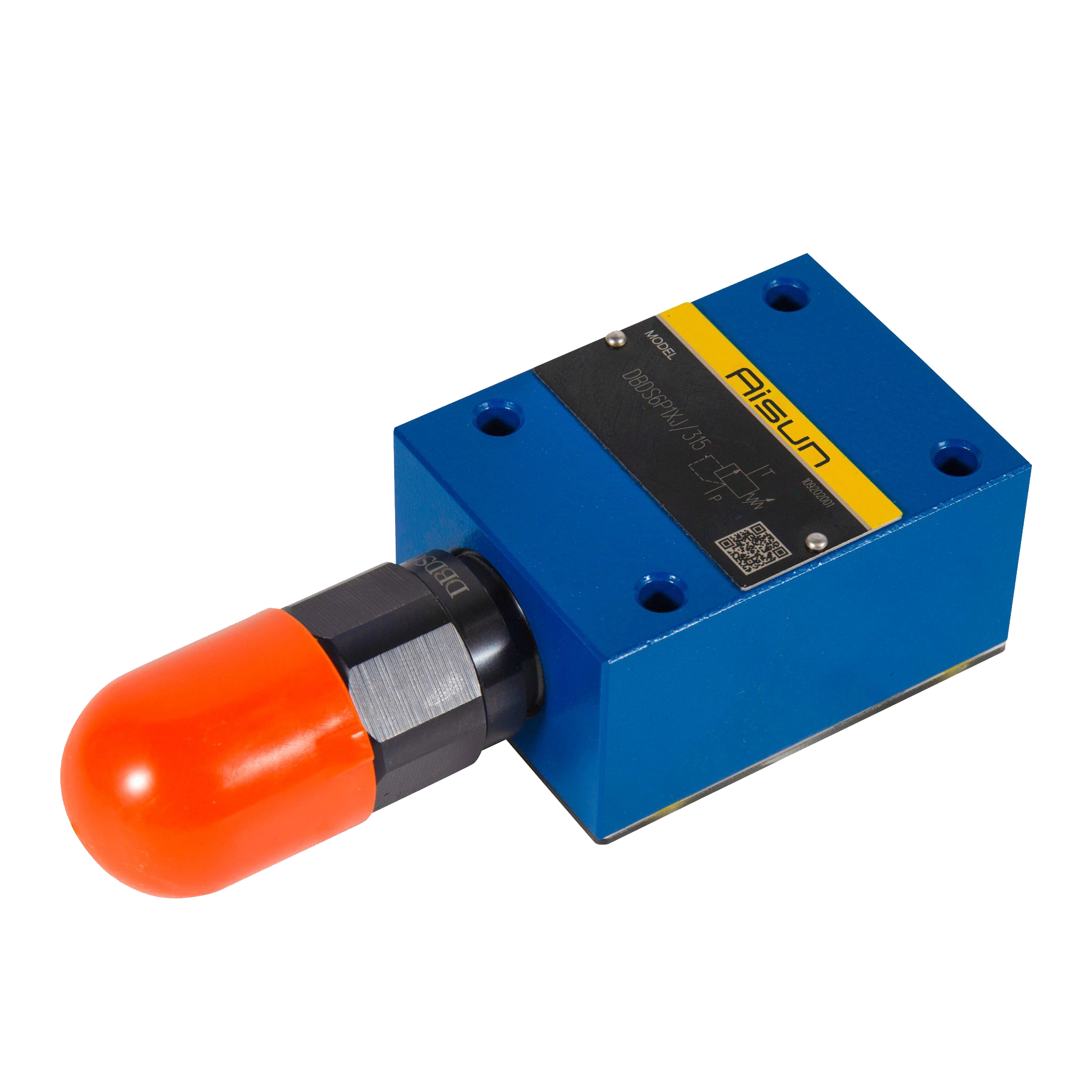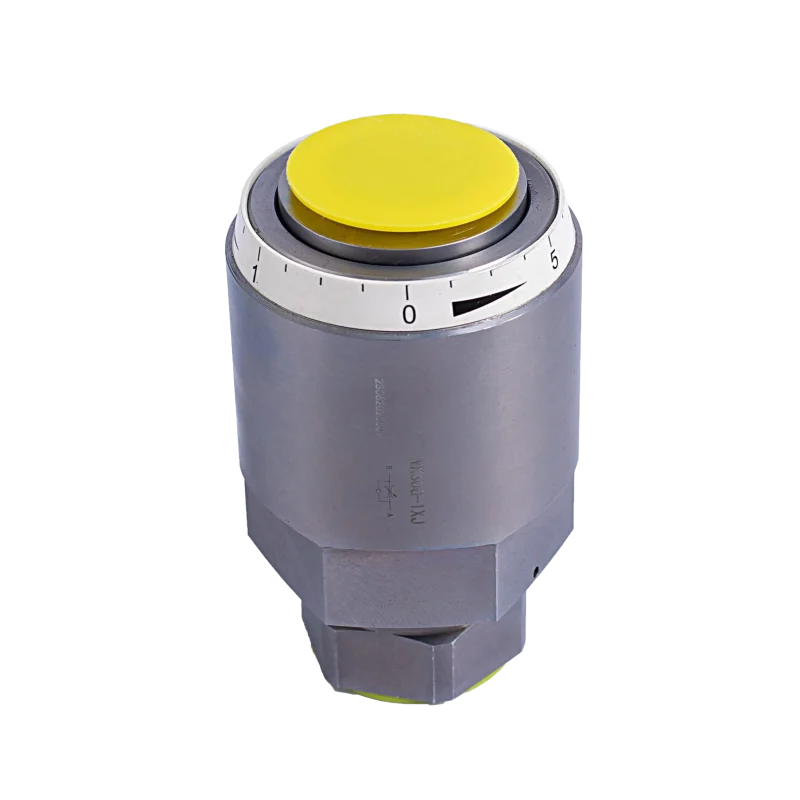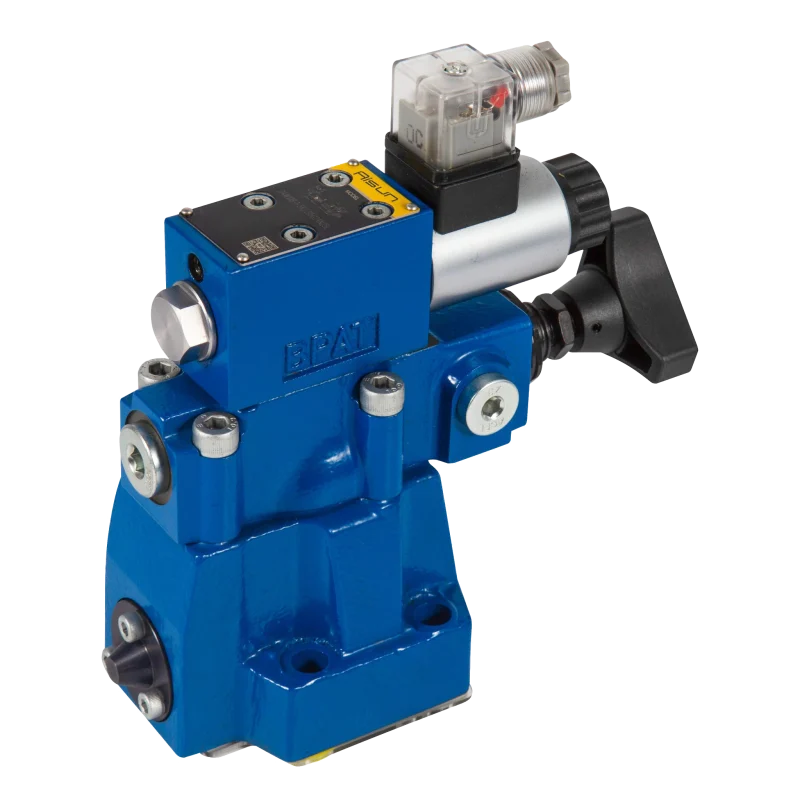Pressure Relief Valve DBD
A DBD valve in the context of hydraulic pressure relief is a specific type of Pressure Relief Valve often used in hydraulic systems to protect them from excessive pressure. It is typically referred to as a Directional Pressure Relief Valve (DBD), combining both pressure relief and directional control in one component. Here’s a breakdown of how it works and its role in hydraulic systems:
What is a DBD Pressure Relief Valve?
The DBD valve stands for “Directional Pressure Relief Valve”. It is a combination valve that provides two essential functions:
- Pressure Relief: The valve protects the system from overpressure by diverting fluid flow when pressure exceeds a preset limit.
- Directional Control: It also has a directional control function, which determines the path the fluid takes once the pressure is relieved.
This dual functionality makes the DBD valve an important component in hydraulic systems where both pressure regulation and flow direction control are needed in a single unit.
Working Principle of DBD Pressure Relief Valve
- Pressure Relief:
- The DBD valve is typically set to open when the pressure in the system exceeds a certain threshold. When this happens, it allows hydraulic fluid to flow from the high-pressure side of the system to a low-pressure return side or reservoir.
- The valve typically uses a spring-loaded mechanism where the spring holds the valve closed until the system pressure exceeds the pre-set value. When the threshold is exceeded, the pressure forces the valve to open, releasing the excess pressure.
- Directional Control:
- In addition to relieving the pressure, the directional aspect of the valve controls which path the fluid will take when it is redirected. For example, once the relief valve opens, it might divert the fluid either to the return tank, the reservoir, or through another designated path depending on system requirements.
- Flow Path:
- The DBD valve typically includes a spool or poppet that can move based on pressure levels, ensuring the flow is either redirected or returned to the tank as necessary.
Key Features of a DBD Pressure Relief Valve
- Pressure Setting:
- The valve is adjustable to allow setting the pressure at which it will open, providing flexibility in managing the system’s pressure levels.
- Dual Functionality:
- Combines both pressure relief and directional control in a single valve, reducing the need for separate valves and simplifying the hydraulic system design.
- Spring-Loaded Mechanism:
- The valve typically uses a spring to hold the valve element in place. The spring tension determines the pressure at which the valve will open.
- Flow Path Direction:
- Once the valve opens, it directs the flow of fluid to a specific path, such as back to the reservoir, ensuring that the pressure is reduced without causing system damage.
- Compact Design:
- By integrating pressure relief and directional control in one unit, the DBD valve reduces the need for multiple components, making the system more compact and efficient.
Applications of DBD Pressure Relief Valves
- Hydraulic Protection:
- The DBD valve is commonly used to prevent overpressure conditions in hydraulic systems, such as those found in mobile equipment, construction machinery, and industrial equipment.
- Flow Management:
- It is used in applications where it is critical not only to regulate pressure but also to control the flow direction when pressure is relieved. This can be crucial in systems where specific fluid routing is necessary when relieving excess pressure.
- Load Sensing Systems:
- In load sensing or closed-loop systems, the DBD valve is essential for managing the pressure in the hydraulic lines while also directing the fluid to various sections of the system based on the pressure relief needs.
- Hydraulic Pumps:
- It can be used in conjunction with hydraulic pumps to protect them from damage due to excessive pressure and ensure proper fluid return.
- Systems with Sensitive Components:
- DBD valves are useful in systems where sensitive hydraulic components, such as actuators or motors, need to be protected from high pressure while ensuring the proper direction of fluid.
Summary:
A DBD Pressure Relief Valve is a specialized hydraulic component that provides both pressure relief and directional control in a hydraulic system. It helps protect the system from excessive pressure by opening to release fluid when a set pressure is exceeded, while also controlling the flow path to ensure the fluid is routed correctly. This type of valve is commonly used in systems where both functions are needed, offering a compact and efficient solution for pressure management and fluid direction.
Key Functions:
- Pressure Relief: Prevents system overpressure by diverting fluid when the pressure exceeds a preset limit.
- Directional Control: Directs the relieved fluid to a designated path, ensuring the system operates safely and efficiently.
By combining these functions into one valve, the DBD valve simplifies hydraulic system design and operation, especially in complex, high-performance applications.
Pressure relief valve DBD
Pressure relief valve DBD
The DBD hydraulic pressure relief valve is direct operated, it is used to limit the pressure of hydraulic system. Features:
- Inserted cartridge
- Threaded connection
- Subplate mounting
- 3 pressure adjustment elements
-Inner hexagon adjusting screw with -protective cap -Adjusting handle -Adjusting handle with lock
The DBD hydraulic pressure relief valve is a crucial component used to regulate and control the pressure in hydraulic systems. Its direct operation ensures efficient and accurate pressure limitation, preventing any potential damage or failure within the system.





